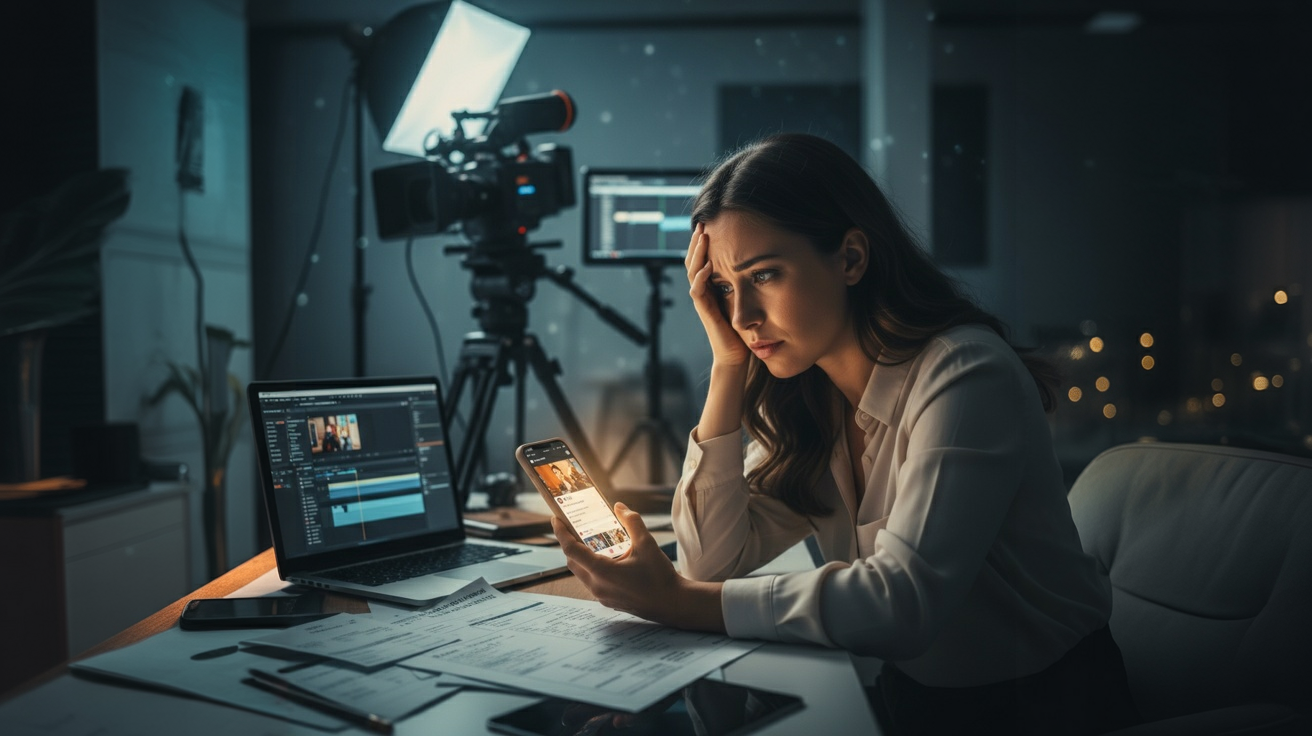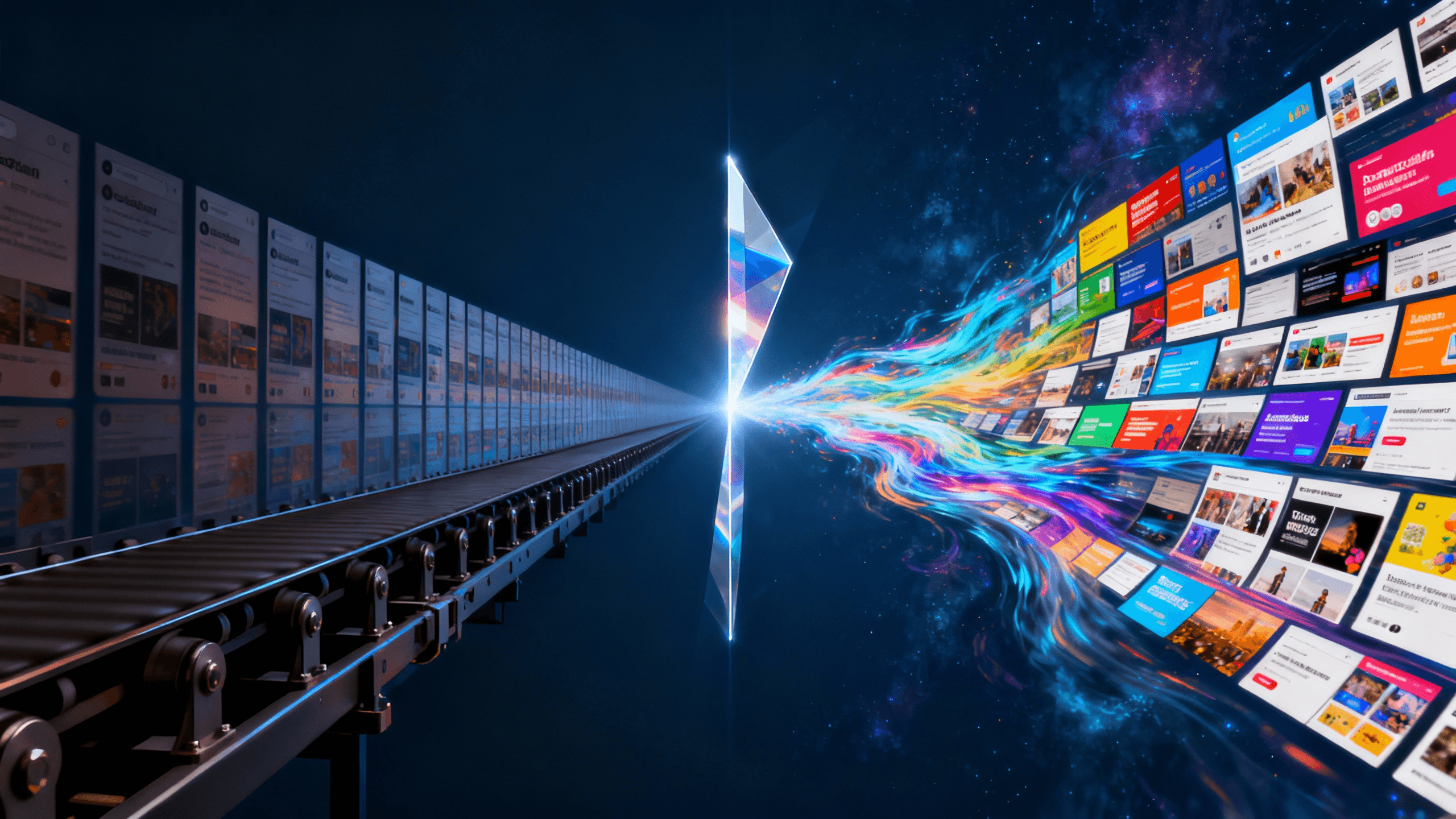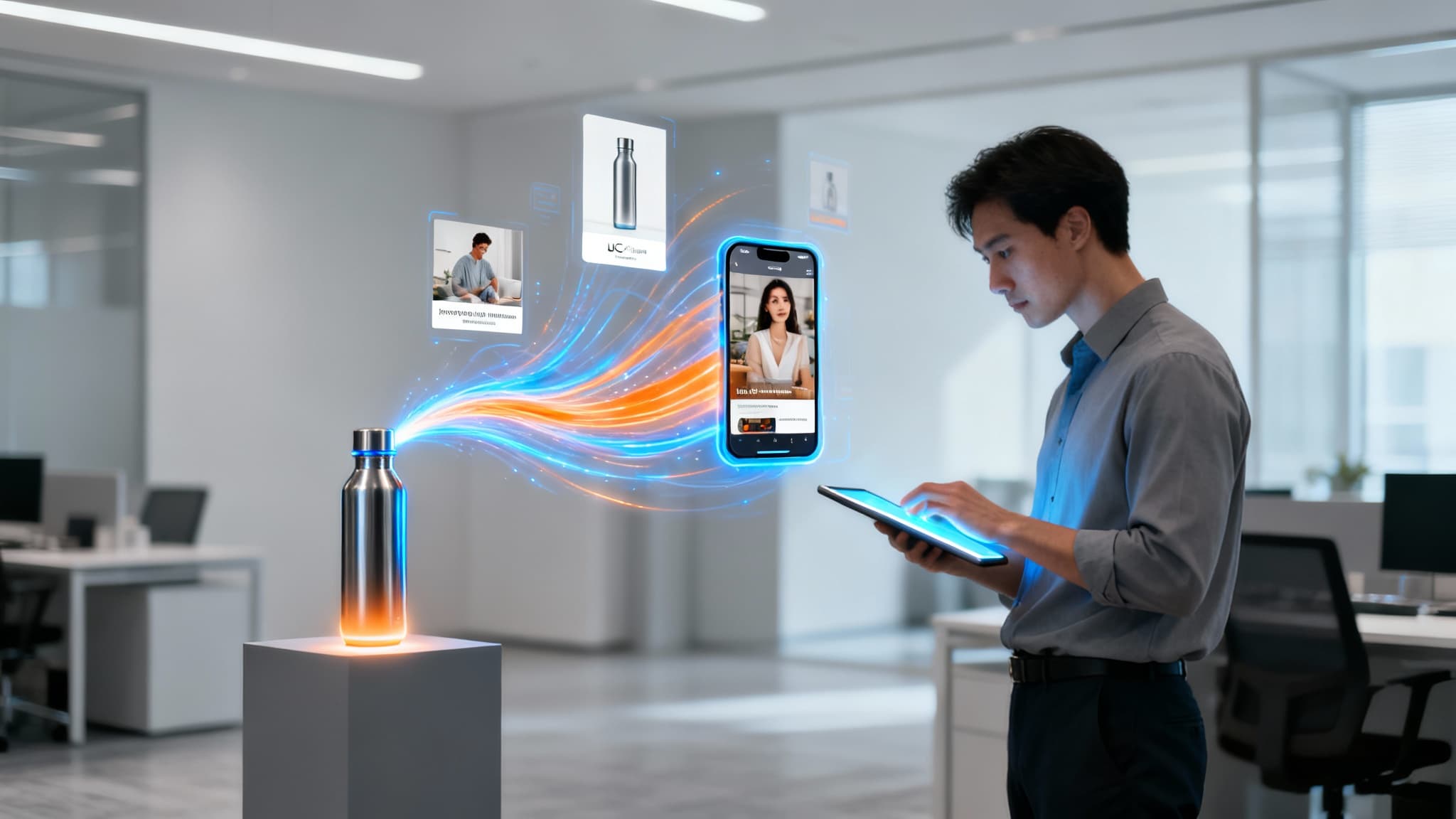Video Ads Too Expensive? How to Scale Your TikTok & Reels Creative Without a Big Budget
Shehroz

Video Ads Too Expensive? How to Scale Your TikTok & Reels Creative Without a Big Budget
You see it in every meeting, every budget review, every performance report. The demand for fresh video creative for TikTok, Instagram Reels, and YouTube Shorts is relentless. But your team is stretched thin, your agency is slow, and you have a sinking feeling that your video ads are too expensive for the results they’re driving.
You’re stuck. You know you need a constant stream of new ad variations to fight creative fatigue and find that next winning angle. Yet, every new video feels like a monumental effort—draining your budget, eating up weeks of time, and involving a logistical nightmare of shoots, talent, and endless feedback loops.
What if you could break this cycle? What if you could stop thinking in terms of “one perfect video” and start thinking in terms of “hundreds of effective tests”? There’s a fundamental shift happening in creative strategy, moving away from slow, costly production and toward rapid, affordable AI content generation. It’s time to change the game.

The Vicious Cycle: Why Traditional Video Ad Production Doesn’t Scale
For modern performance marketing, the traditional video production model is fundamentally broken. It was designed for a world of quarterly TV campaigns, not for the daily demands of social media ad platforms.
Think about the typical workflow. It’s a long, linear, and expensive journey that simply can’t keep up. Every single video requires you to navigate a minefield of common bottlenecks:
- High Production Costs: Studio rentals, camera equipment, lighting, professional actors, and video editors all add up. A single, polished 30-second ad can easily cost $5,000 to $25,000+.
- Excruciatingly Slow Timelines: From the initial brief to the final cut, the process can take anywhere from four to eight weeks. By the time your ad is live, the trend it was based on might already be over.
- Logistical Headaches: Coordinating locations, shipping products, scheduling talent, and managing post-production is a full-time job in itself, pulling you away from high-level strategy.
- Inability to Test at Scale: Because of the high cost and long lead times, you can only afford to produce one or two “hero” concepts. If they flop, a huge chunk of your budget is gone with nothing to show for it.
This cycle forces you to place huge bets on a few ideas, when the key to social media success is placing lots of small, fast bets to see what works.
The Data is In: Why High-Performing Ads Now Look Less Polished
Here’s the counterintuitive truth of modern advertising: your audience is tired of ads that look like ads. The high-gloss, perfectly lit, cinematic commercials that used to win awards are now the very things users scroll past without a second thought.
Why? Because they scream “inauthentic.”
On platforms like TikTok and Instagram, the most effective advertising feels native to the feed. It looks and sounds like the content your target audience is already watching from their favorite creators. It’s authentic, relatable, and often, a little rough around the edges.
This is the power of User-Generated Content (UGC) style creative. It builds trust instantly because it doesn’t trigger the brain’s “I’m being sold to” alarm. It feels like a recommendation from a real person, not a high-pressure pitch from a faceless corporation. The data consistently shows that lo-fi, UGC-style ads outperform their polished studio counterparts in both engagement and conversion.
A Framework for Leaner Video Creative (That You Can Use Today)
So, how do you escape the high-cost production cycle and start creating content that actually resonates? By adopting a leaner, more agile approach focused on iteration, not perfection.
Instead of aiming for one flawless video, your goal should be to generate dozens of “good enough” variations to test hypotheses. Here’s a simple framework to get started:
- Step 1: Focus on the Hook. Don’t write a full script. Brainstorm 10-15 different opening lines or visual hooks. The first three seconds are all that matter. “This one Amazon find saved me $200” is a better starting point than a detailed storyboard.
- Step 2: Asset-First Thinking. Start with what you have. A single product photo. A simple brand message. You don’t need a full-blown video shoot to create a compelling ad.
- Step 3: Generate, Don’t Produce. Use modern tools to create variations around your core assets. How can you change the background? The on-screen text? The call to action? The talent? This is where speed comes in.
- Step 4: Test, Learn, Iterate. Launch your variations with a small budget. See which hooks, visuals, and CTAs get the best response. Double down on the winners and use those insights to generate your next batch of creative.
The Shift from ‘Production’ to ‘Generation’: A New Way to Create
The framework above is supercharged by a paradigm shift in technology: the move from creative production to creative generation.
Production is linear. You have one input (a script) and you get one output (a video). It’s a one-to-one process that is inherently slow and difficult to scale.
Generation is exponential. You provide a few inputs—your product, a key message, your brand guidelines—and an AI system generates dozens or even hundreds of unique outputs. It’s a one-to-many process built for the speed and scale of modern marketing.
AI content generation platforms act as virtual photo and video studios. They allow you to create high-quality, original marketing assets in minutes, without the costs, complexity, or delays of a physical shoot. This isn’t about replacing creativity; it’s about augmenting it and removing the manual barriers that slow you down.
Benefit 1: Go from One Video Ad to Hundreds of Variations
Imagine being able to test every single good idea you have. With generative AI, you can take a single product image and instantly create countless video ad variations.
You can swap out backgrounds to see if your product performs better in a minimalist studio or a lifestyle setting. You can test different AI-generated models to match different audience demographics. You can generate versions with different text overlays, hooks, and calls to action. This allows you to A/B test on a massive scale, quickly finding the combinations that drive the most revenue.
Benefit 2: Cut Your Creative Budget and Production Time by 90%
This is where the argument that video ads are too expensive falls apart. When you remove the need for physical studios, cameras, and crews, the cost structure of content creation collapses.
The weeks you used to spend in pre-production and shooting now become minutes inside a software platform. The thousands of dollars you allocated for a single video can be re-invested into a subscription that delivers unlimited creative assets. This frees up both time and budget to focus on strategy, analysis, and scaling what works.
Benefit 3: Create Authentic, On-Brand UGC-Style Videos On-Demand
The best AI generation tools don’t just create slick, corporate-looking videos. They specialize in producing the authentic, lo-fi, UGC-style creative that performs best on social media.
You can generate videos featuring a diverse range of relatable, AI-generated “creators” who look and feel like real customers. This gives you the authenticity of UGC without the logistical nightmare of sourcing, managing, and contracting with dozens of individual creators. It’s on-demand authenticity that is always perfectly on-brand.
How to Choose an AI Tool for Your Ad Creative Workflow
As this technology explodes in popularity, choosing the right platform is critical. Not all AI generation tools are created equal. Here’s what to look for when evaluating a solution:
- Photorealistic Quality: Does the output look 100% real? The goal is to create assets that are indistinguishable from a real photo or video shoot. Avoid tools that produce uncanny or “deepfake” looking results.
- Deep Brand Control: Can you upload your brand kit, including fonts, colors, and logos? The tool should adapt to your brand, not force you into generic templates.
- Speed and Ease of Use: The platform should be intuitive for marketers, not just for professional designers. You should be able to go from a blank canvas to a finished video ad in under 10 minutes.
- Variety of Assets: Look for a platform that offers a wide range of diverse models, scenes, and styles to ensure you can create content that resonates with all of your target audience segments.
The era of being held hostage by slow, expensive video production is over. The tools are now available to put creative power back into the hands of marketers, allowing you to create at the speed of culture and scale your brand faster than ever before.
If the challenges of traditional creative workflows resonate with you, it might be time to explore how an AI content generation platform can revolutionize your process. Imagine going from idea to campaign launch in the same afternoon. That’s the new reality.
Ready to stop burning your budget on video ads that are too expensive and slow to produce? See how a solution like Slaptastic can help you generate high-performing, on-brand video creative in minutes, not months.



